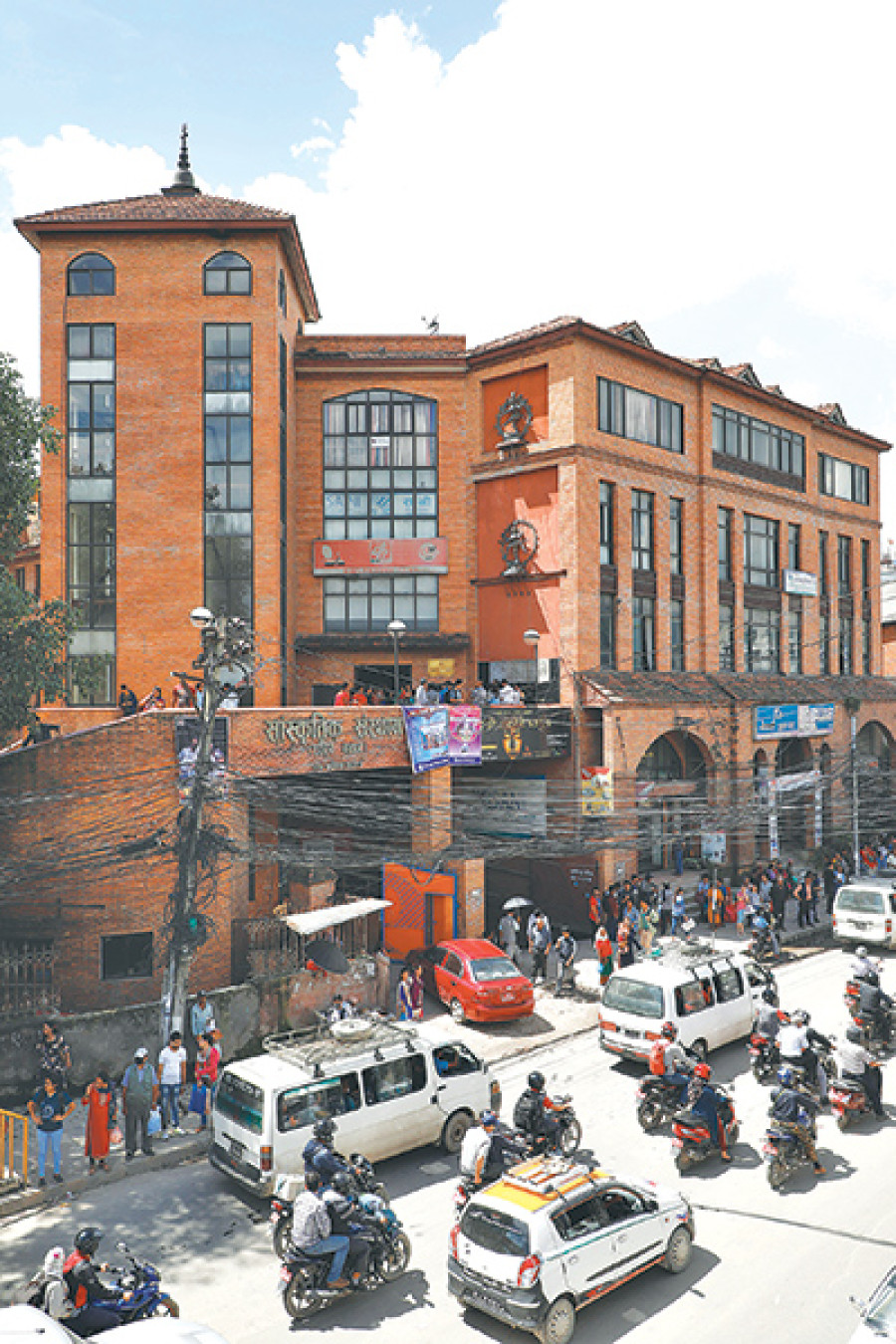Miscellaneous
Rastriya Nachghar and its discontents
When the Gurukul Theatre was dissolved in 2012, many thought it sounded the death knell for private theatres in the Valley. Led by playwright Sunil Pokharel, Gurukul had become an institution, producing plays, training actors and helping popularise Nepali theatre. There were fears among the public that with the closing down of Gurukul, the nascent theatre scene in Kathmandu might collapse. These fears turned out to be unfounded. Since then, the theatre scene in Kathmandu has boomed, with Sarwanam, Mandala, Shilpee, and new entrants Kunja and Kausi churning out quality plays on a regular basis.
Timothy Aryal
When the Gurukul Theatre was dissolved in 2012, many thought it sounded the death knell for private theatres in the Valley. Led by playwright Sunil Pokharel, Gurukul had become an institution, producing plays, training actors and helping popularise Nepali theatre. There were fears among the public that with the closing down of Gurukul, the nascent theatre scene in Kathmandu might collapse. These fears turned out to be unfounded. Since then, the theatre scene in Kathmandu has boomed, with Sarwanam, Mandala, Shilpee, and new entrants Kunja and Kausi churning out quality plays on a regular basis.
The private theatre scene, it seems, is doing very well, playing to large audiences every week. But when it comes to plays, the state-sponsored theatre house, Rastriya Nachghar and the cultural corporation it houses, is pointedly missing. Envisioned as a hub for theatre, music and the performance arts, the Nachghar was first established in 1959 in a bamboo-fenced 450-seater hall. In the ensuing decades, the venue played host to a plethora of cultural events, while giving actors like Bhuwan Chand, Basundhara Bhusal and Subhadra Adhikari a platform that would propel them to fame. The once-iconic Nachghar has, however, slowly slipped out of national consciousness, unable to keep abreast with the more vibrant private theatres.
There is, however, a more insidious reason for its absence in the theatre scene. The Nachghar has become more about making profit than about making art, says theatre artist Raj Shah. Today, the Nachghar boasts two halls, the bigger of which has been remodeled from the previous 450-seater to a 750-seater. This hall was expanded under the argument that it would primarily be used to stage plays put together by trainees enrolled at the institution itself. But plays are few and far in between, taking place only at the end of each of the six-month long theatre workshops conducted by the institution. Instead, available for rent at Rs 60,000 (for four hours), the Rastriya Nachghar’s halls tend to host beauty pageants and conferences.
In an ideal world, the Nachghar would have played the role of a catalyst for the burgeoning theatre circuit, but instead, like so many other government agencies, its ineffectiveness has become a jarring reminder for theatre practitioners that no official help is coming.
“I have heard it used to be a platform for independent playwrights in the olden days, but today, for a play whose budget is around Rs 200,000, it is almost impossible to stage it in the Nachghar,” says Kedar Shrestha, artistic director of Theatre Mall. “The bigger hall is just too large for the kind of plays that get made regularly in Kathmandu’s theatre circuit, and the hall fee too is exorbitant. The smaller one is designed for a meeting rather than a performance.” The impression is that the Nachghar has been remodeled to bring in profit, rather than support artistic endeavours.
I visited the Corporation this week. At early noon, its premises in Jamal exuded the vibe of a deserted historical monument. As soon as you escape Jamal’s chaos, an array of bikes lined the building’s front square and the floor was grubby with spreading puddles of water. People milled about, looking like they don’t belong there. Inside, the small hall was empty while rehearsals for a beauty pageant, called Mrs Nepal, were ongoing in the bigger one. The third floor of the building hosts the office of General Manager Rajesh Thapa, who met me after an hour’s wait.
Thapa spoke to me for a brief 15 minutes, justifying his position and the profit the Corporation now makes. “Prior to my tenure, there were enough reasons for independent theatre makers to hold grudges against the institution but that has changed now,” he explained. “I have done my best to stage plays and organise other cultural programmes. I plan to work with independent theatre makers as well.” Thapa explained that the institution currently receives Rs eight million annually as part of the national budget, but the amount that the institution makes from renting its halls far exceeds that amount. Roughly Rs 10.2 million is made annually from renting its halls and roughly the same amount from renting an adjoining building that it owns to a shopping complex.
At a time when Nepali theatre has scaled new heights and has managed to win over a difficult audience, it is a dismal state of affairs that the national theatre house seems to care more about profit than the arts. That private citizens and theatre houses have done more for the industry than the government-sponsored Nachghar will probably come as no surprise to anyone.
“The Sanstha should be the body devising plans and making itself available to staging plays,” says theatre artist Shah, “Instead, it is leading us nowhere.”




 5.4°C Kathmandu
5.4°C Kathmandu








%20(1).jpg&w=300&height=200)

